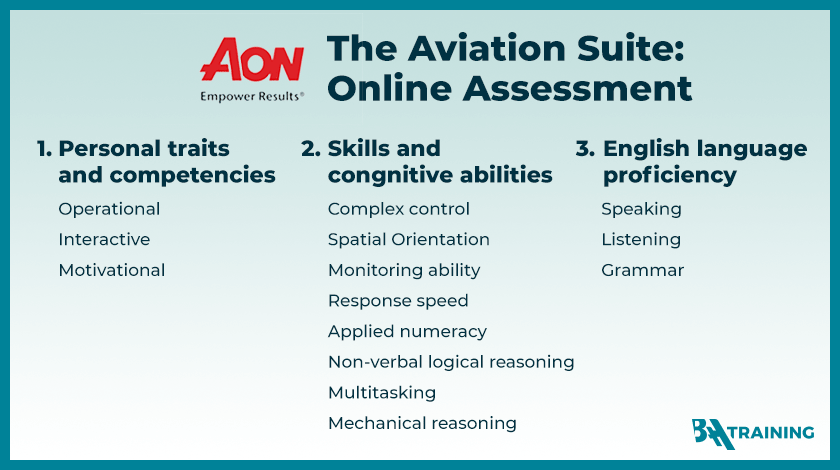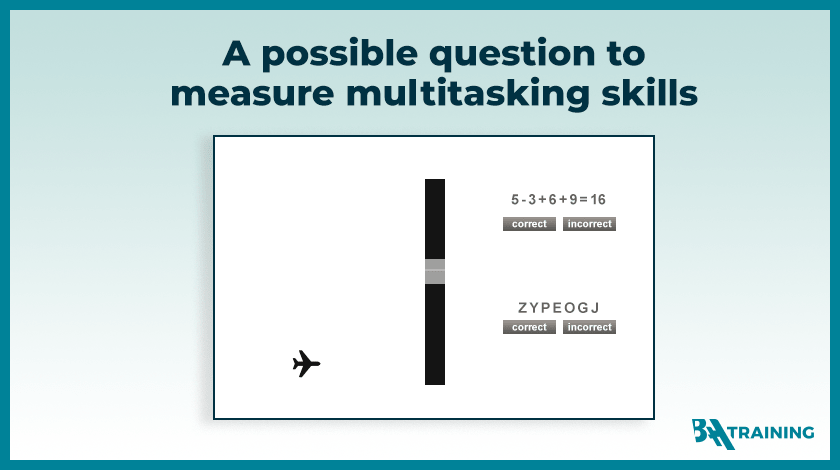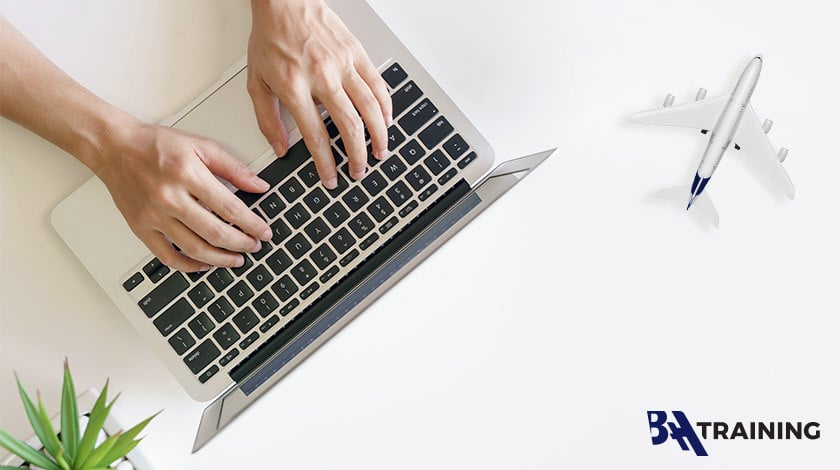Photo: BAA Training
Reading Time: 4 minutesHaving the right prerequisites for joining an aviation academy can only be effective once combined with good assessment results demonstrated during the test. But what is the assessment all about, and how to prepare for it? Keep reading to find out the essential tips and tricks.
Assessment structure
The assessment procedure in BAA Training aviation academy is compulsory and consists of multiple stages. First and foremost, the training center performs document screening and evaluation. After the documents are checked, candidates take an assessment using the Aviation Suite, a part of Aon Solutions online testing system. Aviation Suite is aimed at facilitating the aviation sector-specific selection process. Finally, the prospective pilots take an individual interview, followed by another interview at an airline in case of applying for a cadet program. The stages might seem relatively straightforward, but in reality, it is hardly possible to score well at each of them without due preparation.
Taking a test in Aviation Suite
Aon’s innovative online measurement instruments provide a strong basis for the selection. Precisely Aviation Suite offers short, meaningful, and user-friendly tests which help measure the abilities, skills, behaviors, and competencies essential for a pilot. It allows a training provider to quickly and accurately recognize the applicants’ potential to become successful pilots in the future.
The test comprises three parts that have to be taken in one sitting and last around three hours. For the first one, you only have to provide honest and sincere answers to the questions seeking to reveal your personality traits and competencies. They include operational, interactive, and motivational ones and are of significant importance for a pilot. You would not need to study or prepare in advance for this part of the assessment. The second part evaluates candidates’ skills and cognitive abilities and consists of the following skill tests, each with a strict time limit:
– Complex control
– Spatial Orientation
– Monitoring ability
– Response speed
– Applied numeracy
– Non-verbal logical reasoning
– Multitasking
– Mechanical reasoning
This stage explicitly examines your readiness for taking and succeeding in pilot training. Therefore, we highly recommend you prepare for it. It is important to note that you can take almost all traits and competencies questionnaires and cognitive abilities tests in your native language. The last piece of assessment in Aviation Suite, the English language proficiency test, will help determine your English level separately. Be ready for listening and grammar exercises.

Sample exercises
Different types of questions will aim to disclose to what extent specific cognitive abilities highlighted above are developed.
For instance, to have your mechanical reasoning tested, you might need to read some information on how to operate machinery accompanied by a statement. Your task would be to decide whether the statement is true or false based on what you understood from the abstract.
To have your multitasking abilities tested, you will be given a task similar to the below one. Can you guess what you have to do here? In fact, you need to be quick enough to manage to direct the plane on the left to the grey area in the middle while at the same time deciding whether the statements on the right are correct or not.

Please note that the example exercises overviewed in this article were randomly chosen and represent neither the most difficult nor the most common or most important questions appearing on a real test.
How to prepare for the assessment
As you already know what type of tasks are waiting for you, you can adapt “doing your homework” accordingly.
Repeating mathematical operations and principles, updating your knowledge of physics, and training your short-term memory will be useful. The math test might cover speed, time, distance, ratios, quantity, and interpretation of tables and graphs. The estimations in the math test reflect the real calculations pilots perform at work. Therefore, practicing to make quick solutions for problems like that is essential.
To sharpen your spatial control and complex orientation skills, you could consider playing games simulating flights. For your general knowledge, make sure you know the basic aircraft instruments. They are speed, altitude, radar, artificial horizon, compass, heading, and radiofrequency.
It is also advisable to find and take practice tests for the subsections that you feel you need to get better at. Browse the Internet for online testing products and aptitude testing packs. Besides, reading articles, blogs and using trustworthy resources that look into the topic will be extremely beneficial.
Interview and personal motivations
An individual interview will be another chance for an applicant to demonstrate their ambitions and personal motivations. However, before you proceed to talk with an assessor from BAA Training academy, ask yourself whether you are indeed ready to invest time, effort, and money to pursue a pilot career and imagine how demanding this path is. If your answer is a confident “yes,” you will easily pass this step, which will resemble a job interview.
Stay calm, prepare as much as you can and pass the assessment – you will thank yourself later!

